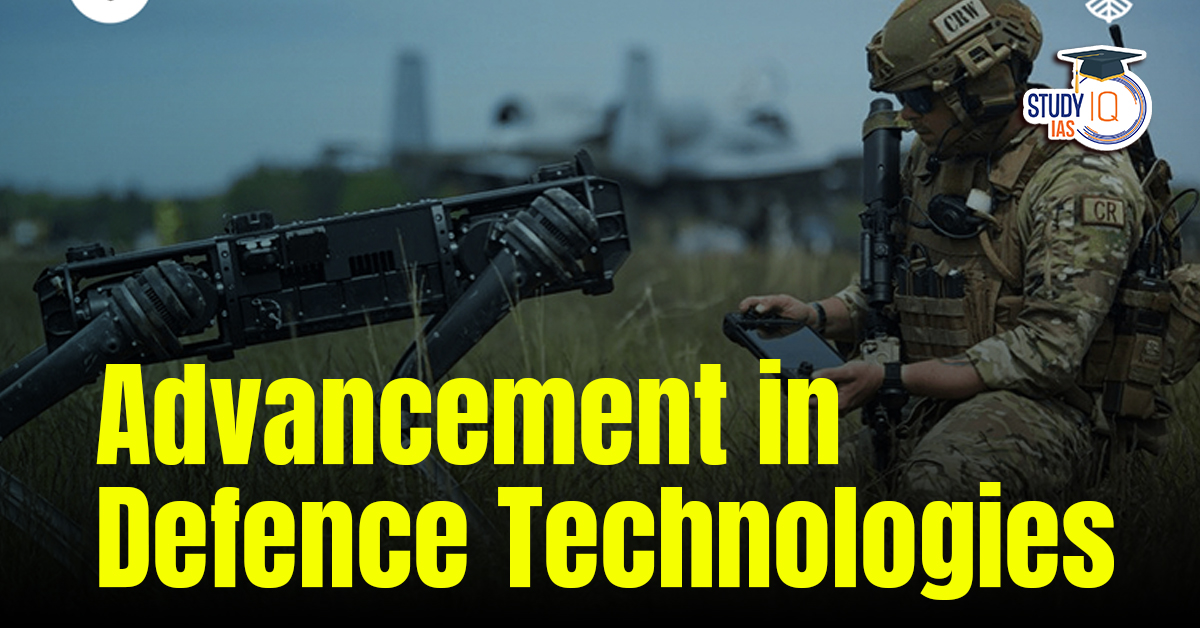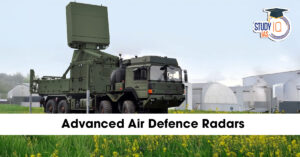Table of Contents
Context: From Operation Sindoor’s surgical strikes to Spider’s Web’s strategic drone incursions, the nature of warfare is evolving.
Advancements in Defence Technologies and Warfare Technology
- Precision-Guided Munitions (PGMs): Enabled targeted, surgical strikes (e.g., Operation Sindoor) with reduced troop deployment and civilian casualties.
- Drones and Loitering Munitions: Used extensively in the Ukraine-Russia war and Operation Spider’s Web. Applications include surveillance, strikes, artillery spotting, and logistics.
- First Person View (FPV) Drones: Low-cost, highly accurate, and operator-guided for real-time engagement. They turn a 20–30 km battlefront into a high-risk zone.
- AI and Robotics Integration: AI-enhanced surveillance, battle management systems, and autonomous drones are becoming a crucial force multiplier.
- Counter-Drone Measures and Fortification: Increased use of jammers, fibre-optic guided drones, and underground bunkers point to new defensive doctrines.
Arguments For Technological Warfare
- Reduced Casualties: Stand-off weapons and drones limit the need for mass troop deployments.
- High Precision and Strategic Reach: Deep-strike capability without escalation or territorial compromise.
- Cost Efficiency: Low-cost drones (e.g., FPVs) deliver strategic impact comparable to expensive traditional weapons.
- Force Multiplier Effect: Enhances the effectiveness of combined arms operations.
Arguments Against Over-Reliance on Technology
- Loss of Ground Control: Drones can strike but not hold territory or engage with civilian populations in conflict zones.
- Vulnerability in Harsh Terrains: In places like Siachen or Eastern Ladakh, drones often fail due to extreme weather.
- Countermeasures Are Evolving: Jamming, decoys, and dispersion reduce drone effectiveness.
- Moral and Legal Ambiguities: Autonomous weapons raise ethical questions about decision-making in lethal engagements.
- Technological Dependence: Heavy reliance may lead to paralysis in the face of system failures or cyberattacks.
Way Forward
- Integrated Force Doctrine: Combine traditional arms (infantry, armour) with technological assets for holistic operations.
- Modernisation of Ground Forces: Equip infantry with UAV support, secure comms, anti-drone tools, and battlefield management systems.
- Training and Restructuring: Embed drone operators at platoon level; emphasize small-unit tactics and adaptability.
- Infrastructure and Indigenous Development: Develop India’s own drone and AI ecosystems under the Make in India and iDEX schemes.
- Ethical and Strategic Frameworks: Formulate clear rules for autonomous weapons under international law.
From Operation Sindoor’s surgical strikes to Spider’s Web’s strategic drone incursions, the nature of warfare is evolving — but not its essence. Technological superiority must complement, not replace, the physical presence and human judgment of ground forces. The future of conflict lies in convergence, where smart machines amplify the strategic capabilities of smart soldiers.


 Advanced Air Defence Radars: Types, Comp...
Advanced Air Defence Radars: Types, Comp...
 Ion Chromatography, Working and Applicat...
Ion Chromatography, Working and Applicat...
 Broadly Neutralising Antibodies (bNAbs):...
Broadly Neutralising Antibodies (bNAbs):...

























